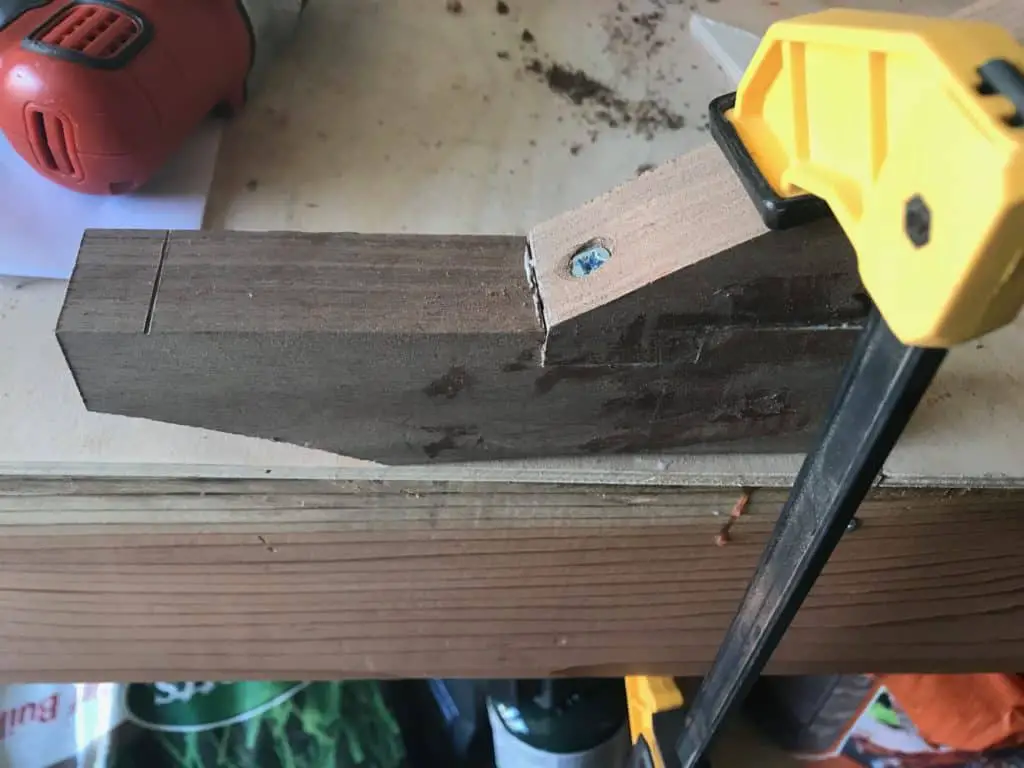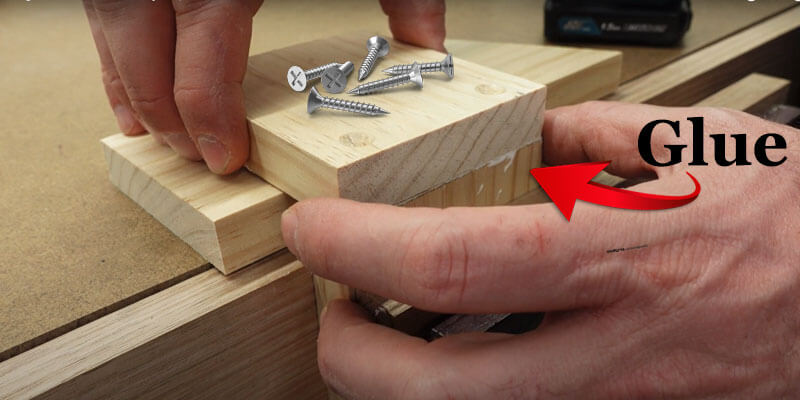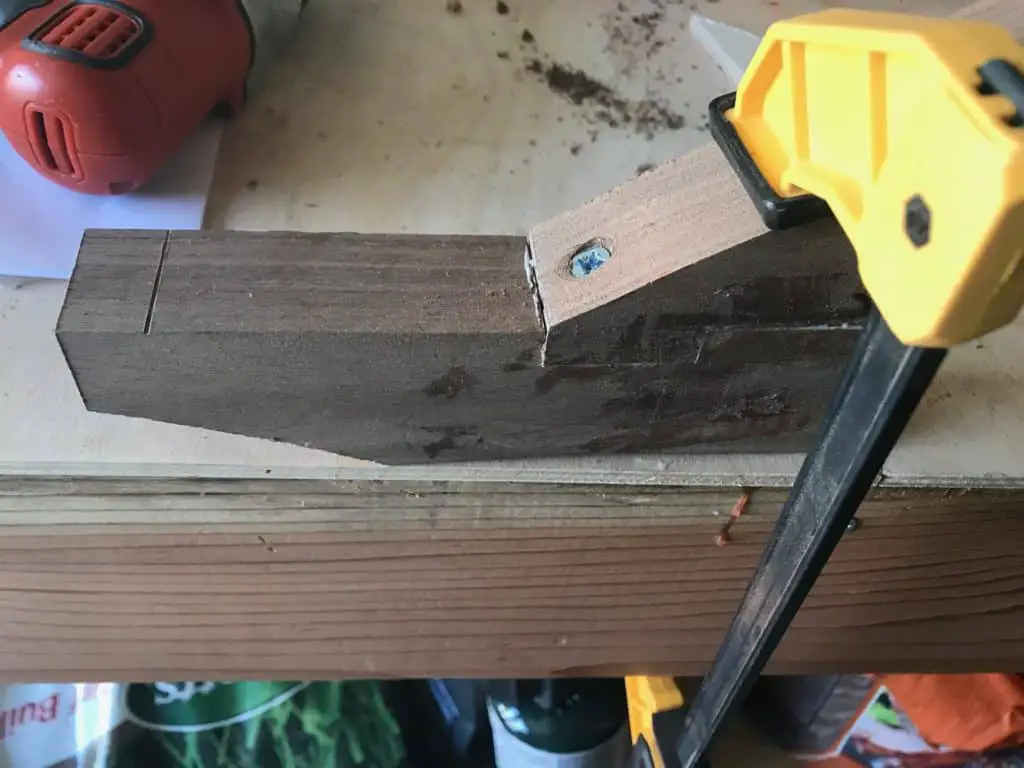If you’re wondering whether you can screw into wood glue, you’ve come to the right place! Wood glue is a handy adhesive used in carpentry and woodworking projects. But can it handle the pressure of a screw? Let’s dive in and find out!
Wood glue is a magical potion that helps join pieces of wood together. But can it also hold screws in place? That’s the question we’ll be exploring in this article. So, get ready to uncover the truth about screwing into wood glue!
When it comes to woodworking, it’s important to know the ins and outs of different materials. That’s why we’re here to demystify the world of wood glue and screws. So, without further ado, let’s get started on this exciting journey of discovery!

Can You Screw into Wood Glue?: The Ultimate Guide
Wood glue is a common adhesive used in woodworking projects to bond pieces of wood together. But can you screw into wood glue? This question often arises when attempting to reinforce a joint or add additional stability to a woodwork project. In this comprehensive guide, we will explore the capabilities of wood glue when it comes to screws and provide you with all the information you need to know.
Understanding Wood Glue and its Properties
Wood glue, also known as carpenter’s glue or woodworking glue, is a strong adhesive specifically designed for bonding wood. It is formulated to create a firm bond that is stronger than the wood itself. When applied correctly, wood glue dries to form a durable and long-lasting bond.
One important property of wood glue is its ability to penetrate the wood fibers, creating a strong bond on a molecular level. This makes it an ideal choice for joining pieces of wood together. However, when it comes to screws, the question arises: can you rely on wood glue alone?
Can You Screw into Wood Glue?
The short answer is no, you cannot rely solely on wood glue to hold screws in place. While wood glue is an excellent adhesive for bonding wood, it is not designed to provide the necessary grip and support for screws. Glue alone may not be able to hold screws securely, especially under the stress and weight applied to the joint.
To ensure a secure and long-lasting connection, screws are typically used in conjunction with wood glue. The screws act as mechanical fasteners, providing additional strength and stability to the joint. Wood glue and screws work together to create a strong and reliable bond.
When using screws with wood glue, it is important to follow a few key steps. First, apply a thin and even layer of wood glue to the joint surfaces. Then, align the pieces of wood and clamp them together firmly. Once the glue has dried, pre-drill pilot holes for the screws to prevent the wood from splitting. Finally, insert the screws and tighten them into place.
Benefits of Using Wood Glue and Screws
Combining wood glue and screws offers several benefits when it comes to woodworking projects.
1. Enhanced Strength: The combination of wood glue and screws creates a joint that is stronger and more durable than either method alone. The glue provides a strong bond, while the screws add mechanical support.
2. Added Stability: Screws help to prevent wood movement, reducing the risk of joints loosening over time. This is particularly important in situations where the wood may be subjected to external forces, such as furniture or outdoor structures.
3. Versatility: Using wood glue and screws allows for flexibility in disassembly and repairs. Unlike other adhesives, wood glue can be softened or dissolved, making it easier to remove screws and disassemble the joint if needed.
4. Aesthetics: Screws can be countersunk and covered with wood filler, providing a clean and seamless finish to the woodwork project.
Considerations and Tips for Using Wood Glue and Screws
While combining wood glue and screws is a common practice, there are a few important considerations and tips to keep in mind for successful results.
1. Choose the Right Type of Wood Glue: There are different types of wood glue available, including PVA (polyvinyl acetate) glue, epoxy glue, and polyurethane glue. Select the appropriate glue based on the specific requirements of your project.
2. Follow the Glue Manufacturer’s Instructions: Each type of wood glue has its own application and drying time instructions. Be sure to read and follow the manufacturer’s recommendations for best results.
3. Use the Right Screws: Select screws that are appropriate for the specific wood project. Consider factors such as the type of wood, the thickness of the material, and the load the joint will bear. Using the right screws will ensure a secure and lasting connection.
4. Pre-drill Pilot Holes: Pre-drilling pilot holes for the screws is essential to prevent the wood from splitting during installation. The pilot hole should be slightly smaller in diameter than the screw to provide a tight fit.
5. Don’t Over-tighten the Screws: Over-tightening the screws can cause the wood to warp or split. Tighten the screws until they are snug, but be careful not to apply excessive force.
By combining the strength of wood glue with the mechanical support of screws, you can create sturdy and reliable woodworking joints. Remember to choose the right type of wood glue, follow proper application techniques, and use the appropriate screws for your project. With careful planning and execution, you can achieve strong and durable connections that will stand the test of time.
Key Takeaways: Can You Screw Into Wood Glue?
- Wood glue is not designed to hold screws on its own.
- It is important to use glue as an additional reinforcement to screws.
- Screws provide mechanical strength, while wood glue adds bonding power.
- Pre-drilling holes before inserting screws can help prevent splitting the wood.
- Using wood glue and screws together creates a strong and durable bond.
Frequently Asked Questions
Are you wondering if it’s possible to screw into wood glue? Look no further! We’ve compiled the most common questions regarding this topic to make sure you have all the information you need.
1. Can screws hold in wood glue?
Yes, screws can hold in wood glue, but it’s important to note that the primary purpose of wood glue is to bond two surfaces together. While wood glue provides initial strength, screws provide additional structural support. The combination of wood glue and screws creates a strong and secure joint.
When using screws with wood glue, it’s essential to ensure that the glue has dried properly. This usually takes around 24 hours. The screws should be inserted through pre-drilled holes, allowing them to grip the wood fibers and create a solid connection.
2. Can I rely solely on wood glue without screws?
While using wood glue alone can provide some holding power, it’s generally not recommended to rely solely on glue for structural integrity. Wood glue is best used as a complement to other fasteners, like screws or nails.
The advantage of using screws in addition to wood glue is that they provide mechanical strength and help distribute the load more evenly. This makes the joint stronger and less prone to splitting or failure. So, for optimum results, it’s best to use both wood glue and screws when joining wood pieces together.
3. What type of screws should I use with wood glue?
When using screws with wood glue, it’s important to choose the correct type of screw. Generally, coarse-threaded screws are recommended for this purpose. Coarse-threaded screws have deeper threads that provide better grip in the wood, resulting in a stronger joint.
Additionally, it’s essential to select the appropriate length for the screws. The length should be sufficient to penetrate both pieces of wood being joined, with a portion of the screw extending beyond the joint for added strength. Consult a hardware store professional or an online guide to determine the right screw length for your specific project.
4. Can you remove screws after using wood glue?
Yes, it is possible to remove screws after using wood glue, but it can be a challenging and time-consuming process. The wood glue creates a strong bond, and removing the screws may cause damage to the wood or the joint itself.
If you need to disassemble a project that has been secured with screws and wood glue, you can try using heat or steam to soften the glue and make it easier to remove the screws. However, be cautious and take your time to avoid damaging the wood or the surrounding area. It’s always best to plan ahead and ensure that the project is assembled correctly from the start.
5. How long does wood glue take to dry before I can add screws?
The drying time of wood glue can vary depending on factors such as temperature, humidity, and the type of wood glue used. Generally, most wood glues require 24 hours of drying time before they reach their maximum strength.
It’s crucial to allow the wood glue to dry completely before adding screws or applying any load to the joint. Rushing the process can weaken the bond and result in a less secure joint. Therefore, it is recommended to exercise patience and follow the manufacturer’s instructions for the specific wood glue you’re using.

Fix Stripped Screw Holes – 3 MINUTE FIX!
Summary
So, can you screw into wood glue? The answer is no, you can’t. Wood glue is not strong enough to support screws because it is designed for bonding wood together, not for providing structural support.
If you need to attach something to wood, it’s better to use screws directly into the wood itself or use other methods like brackets or nails. Remember, wood glue is great for woodworking projects, but it’s not a substitute for screws when it comes to holding things together securely.
